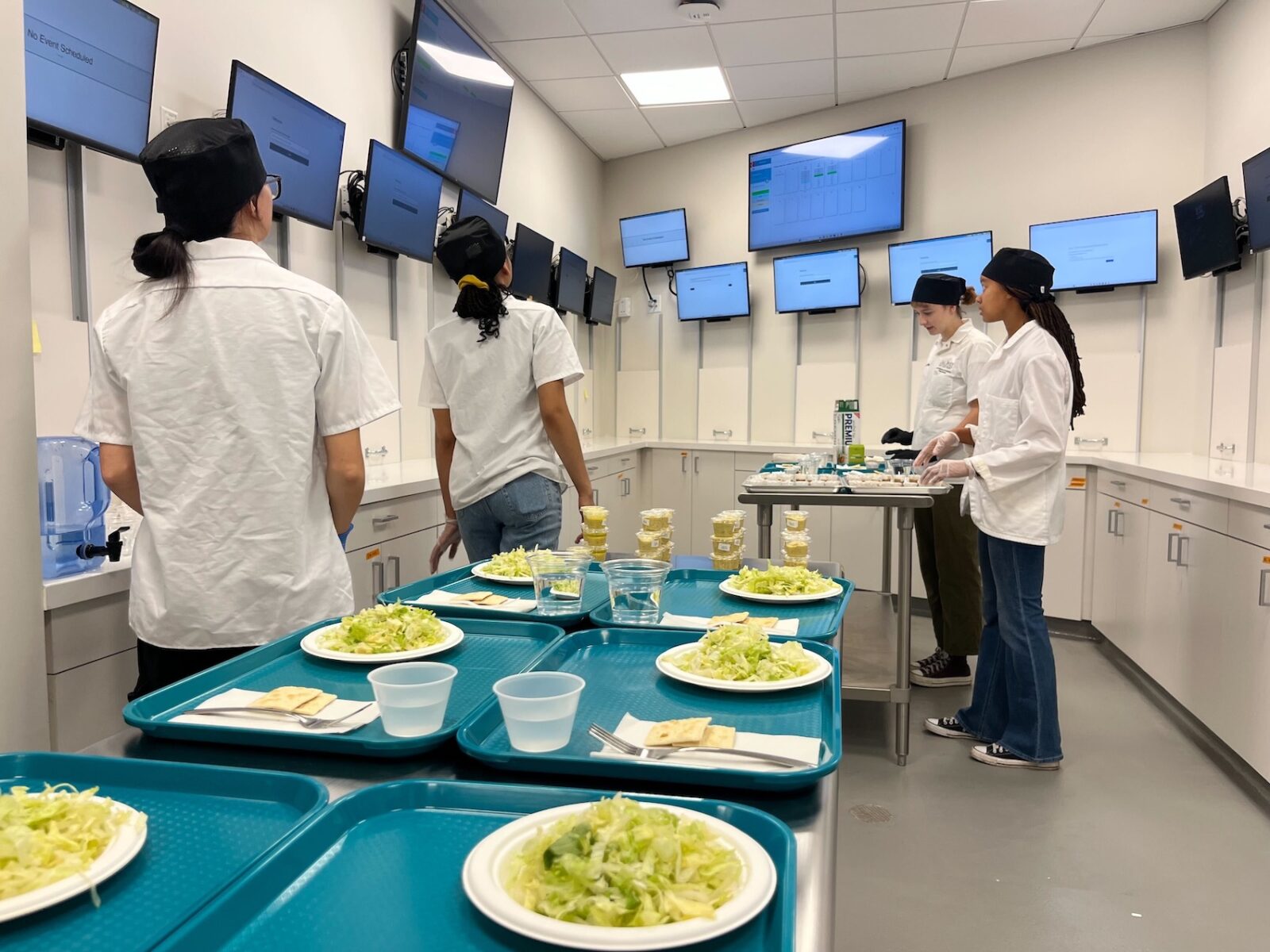New sensory lab gives Cal Poly sensory team a place to run product tests and research

The Cal Poly sensory team was always on the move, running between a small storage closet in the old culinary lab in Food Processing (BLDG 24) and whatever computer lab they were able to get in Alan A. Erhart Agriculture (BLDG 10).
“No place was, like, actually ours,” food science senior and sensory team lead Ellie Conlin-Day said.
This year, in the William and Linda Frost Center for Research and Innovation (BLDG 181) the sensory team finally has a place they can call their own with the new culinary lab and sensory lab.
“This new sensory lab in building 181 is absolutely amazing. It is amazing,” director of the sensory system Amy Lammert said.
The sensory team tests various food products for companies, comparing appearance, texture, taste, smell and sometimes sound of products to competitor’s products. They’ve tested a wide assortment of products including fruits, vegetables, stir-fries, cookies and beverages.
Sensory tests are important because they ensure the success of a product, Lammert said.
“You can have the greatest product made with the greatest technology, but if the consumer is not gonna buy it and eat it, it’s not gonna sell,” she said.
In the new sensory lab, tests can be conducted at industry standards, including special lighting to eliminate bias and privacy booths to prevent participants from being influenced by others.
The new lab has 24 spots, compared to most labs which only have 12-18 spots, Lammert said. This means the team can have more testers and collect more data on the products.
In each testing station there’s a computer screen and keyboard for people to enter their answers to the survey questions. The survey asks participants to describe their initial thoughts on the product based on how it looks and smells, then to describe how it tastes and the texture.
“I think it’s also opening a lot of more opportunities that we have an official lab space that can be promoted for more company opportunities to come,” Conlin-Day said. “And that in turn opens up more opportunities for students to learn from because there’s a wider variety of things to be tested and experiences to be had.”
Anyone can sign up to be a product tester and Conlin-Day said she encourages anyone that’s interested to do so. Product testers are compensated with Amazon gift cards as well.
Being a product tester is “a very approachable way to become a knowledgeable consumer,” Conlin-Day said.
People can sign up to be product testers by scanning the QR code posted outside the lab or by visiting their signup page.

